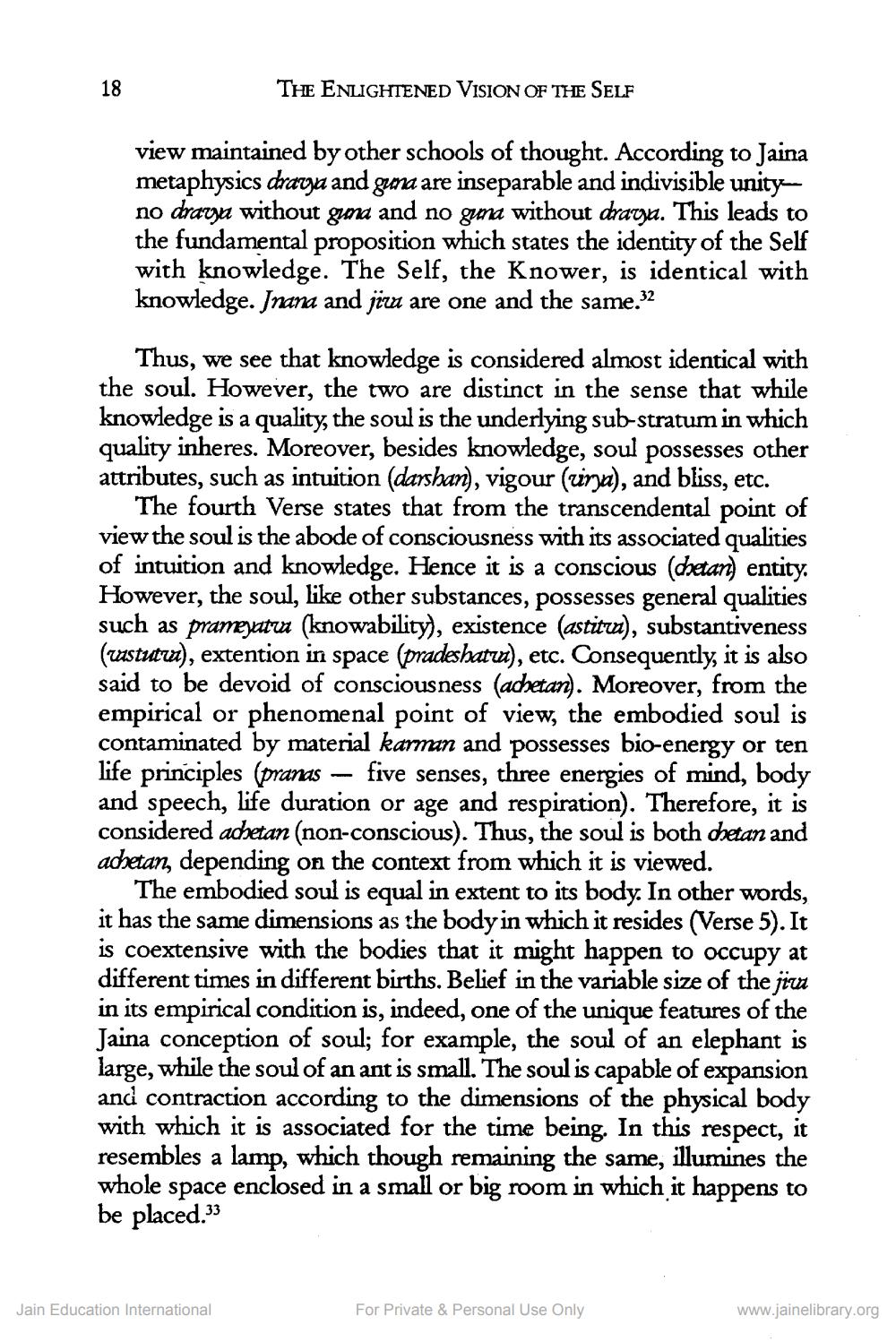________________
THE ENLIGHTENED VISION OF THE SELF
view maintained by other schools of thought. According to Jaina metaphysics drauja and gma are inseparable and indivisible unity no drarya without gana and no guma without draga. This leads to the fundamental proposition which states the identity of the Self with knowledge. The Self, the Knower, is identical with knowledge. Jnana and jiza are one and the same.32
Thus, we see that knowledge is considered almost identical with the soul. However, the two are distinct in the sense that while knowledge is a quality, the soul is the underlying sub-stratum in which quality inheres. Moreover, besides knowledge, soul possesses other attributes, such as intuition (darshan), vigour (rina), and bliss, etc.
The fourth Verse states that from the transcendental point of view the soul is the abode of consciousness with its associated qualities of intuition and knowledge. Hence it is a conscious (chetan, entity. However, the soul, like other substances, possesses general qualities such as pranejatra (knowability), existence (astitra), substantiveness (vastutua), extention in space (pradeshatra), etc. Consequently, it is also said to be devoid of consciousness (achetan). Moreover, from the empirical or phenomenal point of view, the embodied soul is contaminated by material karman and possesses bio-energy or ten life principles (pranas – five senses, three energies of mind, body and speech, life duration or age and respiration). Therefore, it is considered achetan (non-conscious). Thus, the soul is both chetan and achetan, depending on the context from which it is viewed.
The embodied soul is equal in extent to its body. In other words, it has the same dimensions as the body in which it resides (Verse 5). It is coextensive with the bodies that it might happen to occupy at different times in different births. Belief in the variable size of the jira in its empirical condition is, indeed, one of the unique features of the Jaina conception of soul; for example, the soul of an elephant is large, while the soul of an ant is small. The soul is capable of expansion and contraction according to the dimensions of the physical body with which it is associated for the time being. In this respect, it resembles a lamp, which though remaining the same, illumines the whole space enclosed in a small or big room in which it happens to be placed.33
Jain Education International
For Private & Personal Use Only
www.jainelibrary.org




